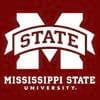Minimize heat stress to maximize milk production and quality
Published: January 24, 2018
Source : Dr. Amanda Stone / Mississippi State University
Dealing effectively with heat stress in dairy herds is an essential management issue throughout the nation, but Southeastern dairy producers are forced to deal with extreme heat and humidity for prolonged periods. Heat stress decreases feed intake and milk production, decreases milk components including fat, lowers breeding success, and compromises the immune system, which increases the risk for multiple diseases. Hot and humid environments also allow mastitis pathogens to thrive. Below are several ways to help be proactive in heat abatement in dairy herds.

Watch for signs of heat stress. Mild to moderate heat stress signs include rapid shallow breathing, sweating, and about a 10% decrease in milk production and feed intake. As temperatures continue to rise, cows will show severe heat stress signs, including milk yield and feed intake decreases of greater than 25% and cows will begin panting. Cows never lie, so if they are showing signs of heat stress, corrective actions need to be taken to counteract it.
Think ahead. Each year, it’s not a matter of if it will get hot enough for cows to be heat stressed, but when. Waiting until the heat hits to make cooling changes is adjusting a problem too late. Think about making improvements, like hanging new fans or cleaning the old ones, in the winter so that the cows can experience the positive effects as soon as the heat comes.
Increase water availability. Drinking water is one of the most important parts of deferring heat stress in dairy animals because water cools the animals internally. At least 25 gallons per cow per day available for all animals is recommended. Cows drink about 50% of their total daily water intake immediately after milking so providing water as cows exit the parlor is beneficial. Keep in mind that cows are more likely to drink cool and clean water, so cleaning water tubs frequently and keeping them in shaded areas will encourage drinking.

Use fans and sprinklers. Because cattle sweat at only 10% of the human rate, they need mechanical means to reduce heat. One of these ways is by using sprinklers and fans as an evaporative cooling method. Having enough properly angled fans is important because the water can actually hold the heat in the cow if it does not evaporate. Adding water into poorly ventilated barns can create a more humid environment, making the situation worse. Therefore, ensure that there is enough ventilation and air movement in the barn before using sprinkler systems.
Use shade. Shade allows cows to rest in a more comfortable environment outside. Trees can provide effective shade, but cows will often compact the area around the trees, which may cause the trees to die early and often creates a mudhole. Cows will continue to lie in the mud, which can result in greater risk of mastitis. Rotating fences between shady spots in the lot can decrease this problem. Portable shade is a great option because it can be rotated to new areas within a pasture and among different pastures to prevent mudholes. Center pivots are a useful tool for pasture dairies, allowing for evaporative cooling outside.

Cool the holding pen. Cows spend hours each day standing in the holding pen and are often tightly packed, so it should be prioritized when examining ways to minimize heat stress. Although overstocking is never recommended, even more problems can occur during hot periods. The amount of airflow will be reduced and not all animals will be able to feel the moving air on their backs. If effective cooling occurs in the holding pen, less cooling will be required between milkings. Consider using both fans and sprinklers in the holding pen, but remember that adding water into a poorly ventilated holding pen will make it more humid and hot. Therefore, opening up the holding pen where possible, is recommended to allow for better ventilation.
Adjust the ration. Feed intake will decrease during periods of heat stress, which then decreases milk production. However, a cow's energy requirement for lactation is unchanged during this time, but her energy needs to remain cool actually increases by about 30%. Re-balancing the ration to be more nutrient-dense during these periods will allow the cows to maintain production while still eating a smaller volume of feed.
This article was originally published in the Southeast Quality Milk Initiative Quarterly, Spring 2017.
Related topics:
Mentioned in this news release:

Influencers who recommended :
Hassan KhanRecommend
Comment
Share
31 de enero de 2018
Dear Dr. Amanda
Thanks for the publication. Unfortunately, this article, as many others published before, are very general and don't give exact instructions on when and how to do things. farmers reading this article do not know exactly, what are the cow's requirements for good cooling. The article is missing the most important things like wind speed required, wetting quality, time of cooling etc'.
I published a few months ago an article in this magazine (" Air, water time and cow -this is all you need to cool your cows"), I suggest Engormix to publish this article once again, as a service to these farmers
Dr. Israel Flamenbaum
www.cool-cows.com
Israel
Israel
Recommend
Reply
31 de enero de 2018
very applied article and utmost needed to be implemented by farmers specially in hot and humid regions, Most of the farmers complain severe panting, less feed intake and decreased milk production and unsuccessful breeding in summer. to overcome the above mentioned one must take care of their cattle accordingly.
Recommend
Reply
30 de enero de 2018
I would like to have some more information regarding
Ration Adjustment .Thank you .Dr.Khazel .
MA,MSc,Diploma ,Ph.D(.
Recommend
Reply

Would you like to discuss another topic? Create a new post to engage with experts in the community.












